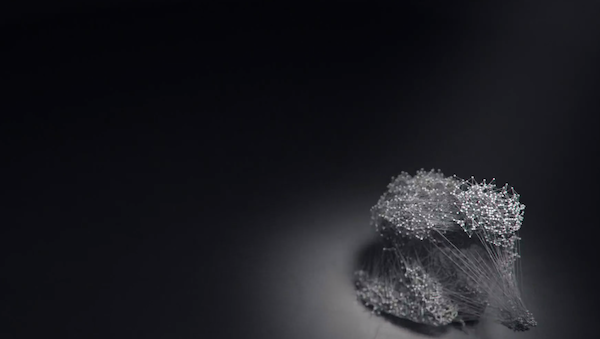About ten years ago, I was hired to do choreography for a motion capture movie that was shooting in Fiji. My two dancers, the mo-cap team, and I were all based in Venice, CA, where we rehearsed and where the team also had a motion capture studio and state of the art equipment within walking distance. Instead, we had to fly to Fiji to do the capture. Why Fiji, you might ask, when the whole thing was digital anyways, and the Venice studio was around the corner? A good question for a ridiculous situation overall, but that’s another story. What is key to know relative to this story is that back then in Fiji, there were something like twelve or sixteen cameras around the room, my two dancers had to be wired with something like twenty-four sensors each, and the system was so relatively new that that the dancers had to move almost completely frontally; if they overlapped one part of their body over another the image would be cancelled out entirely. Not to mention the fact that because the film’s absurd concept included choreography for characters like animated penguins, I had to be concerned with how to make humans dance like animals who apparently don’t have any knees. Suffice to say, it was an extraordinarily laborious process.
What is interesting is how far motion capture has and continues to progress to date. Today, systems are so sensitive they can pick up facial expression and nuanced gestures. And clearly the technology has advanced significantly enough that sophisticated dance movement can be captured wherein the body turns, crosses over itself, and still translates and emotes.

This is the case with as.phyx.i.a, a short, motion capture, “collaborative effort and experimental film created by Maria Takeuchi with Federico Phillips and performed by Shiho Tanaka.” While not perfect and still a developing technology, the film’s dancer – without any identifiable face and emerging as she does to create moving shapes out of mere needles and dots minus any superimposed animation on her body – still manages to convey a substantial amount of emotion and humanity. Like the dancer, the camera, employing circular and overhead shots, is almost never still. The filmmakers apparently incorporated a number of 3D tools and built an environment in which the dancer could appear to be more visually “photo real”.
As per the film’s web page notes, as.phyx.i.a “is an effort to explore new ways to use and/or combine technologies and different fields in an experiment without many of the common commercial limitations. The performance is centered in an eloquent choreography that stresses the desire to be expressive without bounds.”
as.phyx.i.a is both an interesting study and a testament to how we as humans are hard wired to read emotion and story into even faceless figures.
Enjoy.
as·phyx·i·a from Maria Takeuchi on Vimeo.
